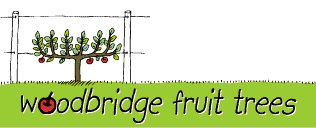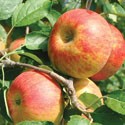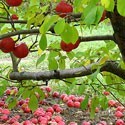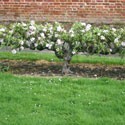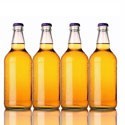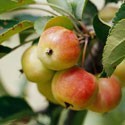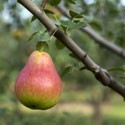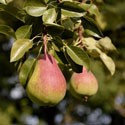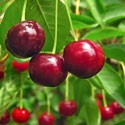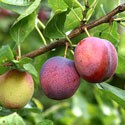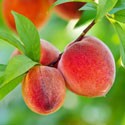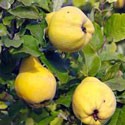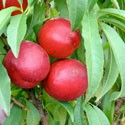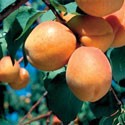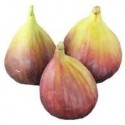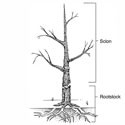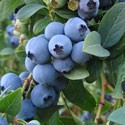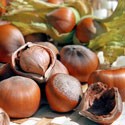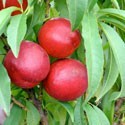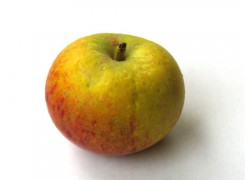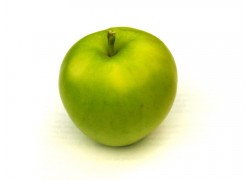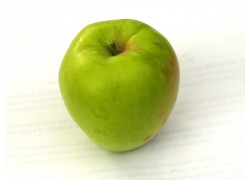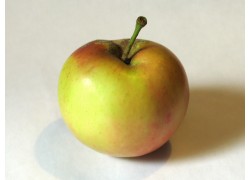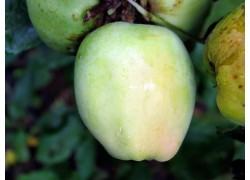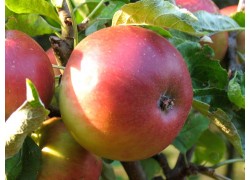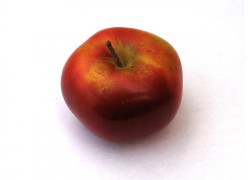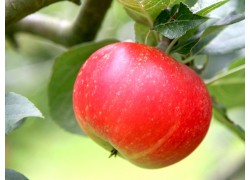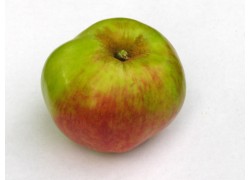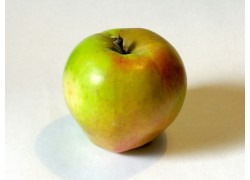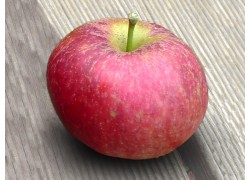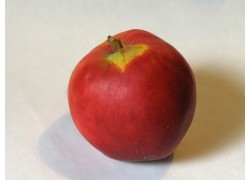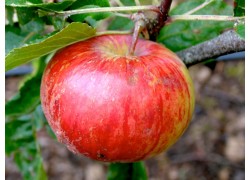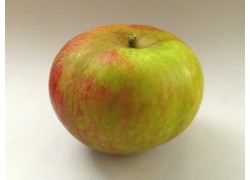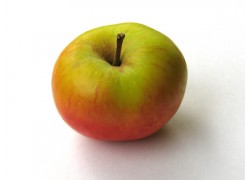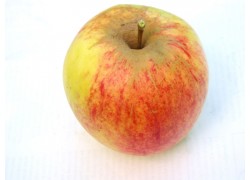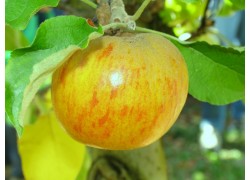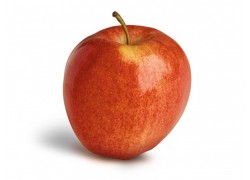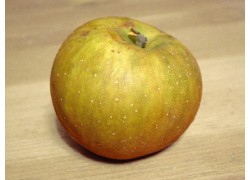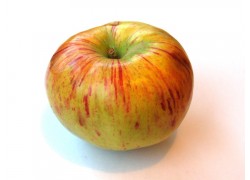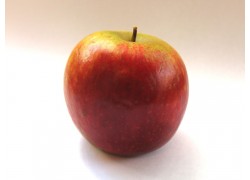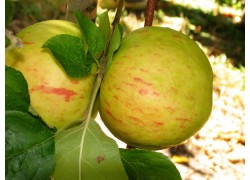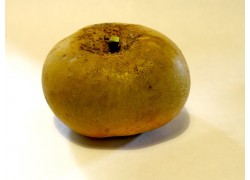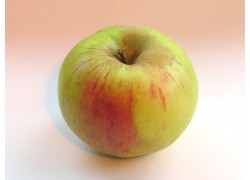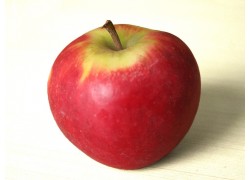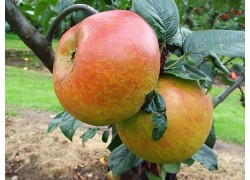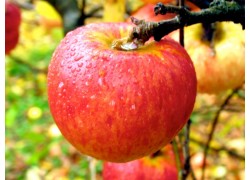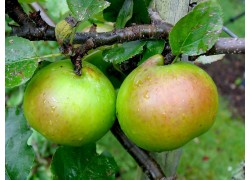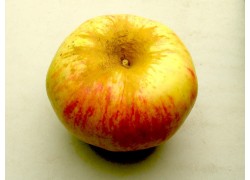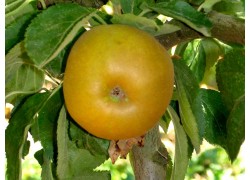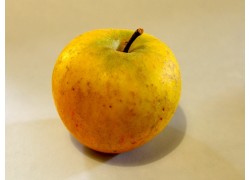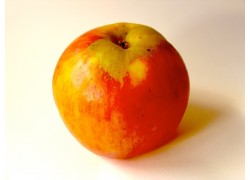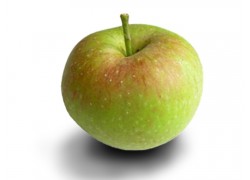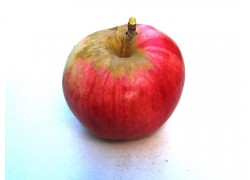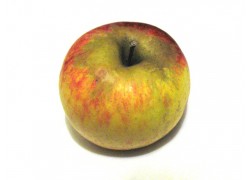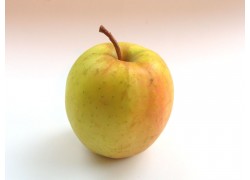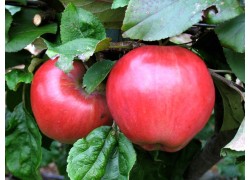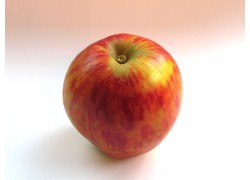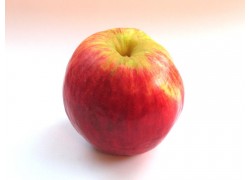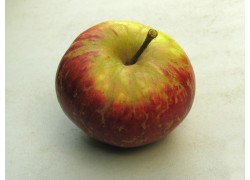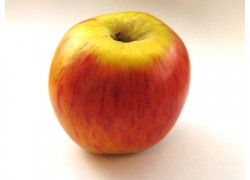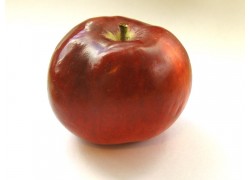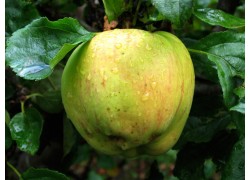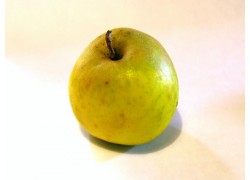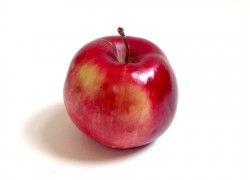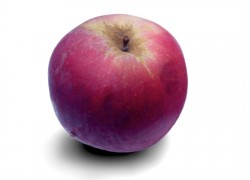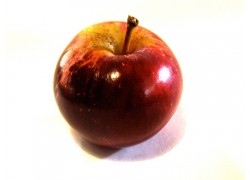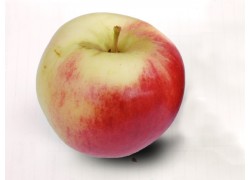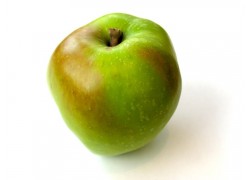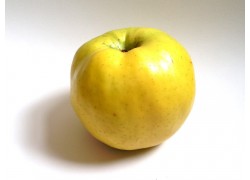No products
Filter
Our range of dwarfing and non-dwarfing fruit trees, nuts, berries.
Fruit Trees There are 256 products.
Subcategories
-
Dwarf Apples
Heritage apple varieties on DWARF rootstock. These apples are ideal for back yards, small orchards, espaliers or anywhere where space is tight. Varieties ripen from Christmas to July providing 6 months of fruit. Wee included some more recent varieties as well as historic ones. There are excellent eating apples, cookers, big, small, common and unusual. Something for every occasion.
-
Semi-dwarfing Apples
Heritage apple varieties on SEMI-DWARFING rootstock. These apples are ideal a free-standing tree, rather than espaliering. They are a little more vigorous than our dwarfing trees.
-
Stepover Apples
Step-over apple trees on EXTRA-DWARFING rootstocks. These highly sought-after trees can make productive hedges half a metre in height. Ideal for edging garden and vegetable beds, or a striking ornamental hedge. We tend to select later ripening varieties so that the fruit are hanging after the leaves have fallen. See our article on step-overs for more information.
-
Cider Apples
Cider apple trees on SEMI-DWARFING rootstocks. These are a selection of specialty cider varieties from the English and French cider traditions. They make superior cider (in the right hands!) and are to the cider world as to the Pinot Noir or Chardonnay are to the world of wine.
-
Crab Apples
Crab apple trees on SEMI-DWARFING rootstocks. These are considered as ornamentals, but can be used in juicing to offset the sweeter apple or pear. Highly regarded as pollinators for apple varieties because of their prolific flowering.
-
Dwarf Pears
Pear trees on DWARFING rootstocks. Dwarfing forms allow these pears to bear much earlier and make more manageable trees than the huge old pear trees seen on old farms. "Pears for your heirs" was the old adage pointing to their longevity, slowness of growth and bearing, and eventual large sized tree. The French (and Belgians) have been responsible for bringing pear culture to it's peak in the 1700s.
-
Perry Pears
Select from our range of Perry pears on Dwarfing rootstocks.
-
Cherries
Cherry trees on DWARFING rootstocks. The sweet cherry varieties we grow have been developed from the European bird cherry (Prunus avium), while the sour cherries (which are still tangy as well as sweet) have been developed from Prunus cerasus, a wild cherry from Asia. Cherries definitely need protection from birds and many growing methods have been developed to accommodate this eg. espalier, spanish bush or fans so that they can be netted.
-
Plums
Plum trees on NON-DWARFING rootstocks. The so-called European Plums we sell were introduced into Europe from Syria and Persia and are the product of long selection and development over the last 1000 years. Plums have pale greenish yellow flesh and rich sugary flavour, ripening in February. Generally two varieties are needed for cross pollination, although there are some that are self fertile. Esplaiering these shuold be done on a fan shape only.
-
Peach
Old style peaches on non-dwarfing rootstock. These are best grown as free-standing trees to 3-4m but can be espaliered in a FAN shape effectively keeping it below 1.8m.
-
Quinces
Quince trees on DWARFING rootstocks. Closely related to the pear, quinces are attractive trees, and the fruit wonderfully aromatic - treasured for cooking, tarts, preserves and jellies.
-
Nectarine
Old style Nectarines on non-dwarfing rootstock. These are best grown as free-standing trees to 3-4m but can be espaliered in a FAN shape effectively keeping it below 1.8m.
-
Apricots
Apricot trees on SEMI-DWARFING rootstocks. These are best grown as free-standing trees to 3-4m but can be espaliered in a FAN shape effectively keeping it below 1.8m. The Moorpark produces a smaller tree, and can be kept smaller on an espalier as well. Medlars produce small trees or can be espaliered easily to 1.5m.
-
Figs
Figs on non-dwarfing rootstocks. Knows for their sensuous fruit both fresh and dried. Figs like long hot summers but not too dry, with well drained soils, preferrably out of the wind. They tolerate being potted. -
Rootstocks
Rootstocks are used for grafting and budding onto. If you know or want to learn how to graft or bud, you can propagate yourself. This year we offer a handful of rootstocks, but sorry no quince or pears.
-
Berries
A selection of raspberries, blackberries, logans, blueberries, currants and other edible berries for the garden.
-
Nut Trees
Hazelnuts and almonds. Hazels are great for mass hedging, but can be trained into a small tree. Almond pollination can be tricky but this self-fertile one allows you to grow plenty with just one tree.
-
Dwarf Stone Fruit
Dwarfing Stone fruit - Peaches, Apricots, Plums, Nectarines. Idea for small espaliers or pots.
-
Beauty Of Bath Dwarfing Ripens: January
A very popular old apple from the southwest of England during the 19th century. It's one of the earliest apples - maturing in most parts of Australia around Christmas. Small in size, its skin is an attractive red flush / stripe over yellow. The flesh is creamy white with a fairly sharp but sweet flavour and quite aromatic.
$39.50 -
Early Victoria Dwarfing Ripens: January
The earliest ripening cooking apple that we know of. Very prolific tree, laden with small bright green codling fruit. Eaten fresh, it's flesh is quite soft and the sweet acid makes your tongue tingle. From England around 1900. Cooks to a subacid fluffy consistency needing minimal sugar added.
$39.50 -
Sugarloaf Pippin Dwarfing Ripens: January
A long narrow shaped pale yellow apple with white on the sunny side. Crisp, with high acid content making it quite zingy eaten fresh and excellent cooked. A seedling from a white transparent and like it's parent doesn't keep long. Interestingly, it died out in England, and we have sent propagating material back to the UK.
$39.50 -
Vista Bella Dwarfing Ripens: January
In our opinion the best of the early apples. It's from the McIntosh group developed in New Jersey, USA in the 1950's. It ripens about 10 days later than Beauty of Bath. Creamy yellow skin striped scarlet, smallish in size with a lovely perfumed crisp and juicy flesh.
$39.50 -
White Transparent Dwarfing Ripens: January
An amazingly popular apple by virtue of its many names (eg Klarapfel, Kornapfel, Augustapfel) and the many places in which it is grown. Can ripen as early as Christmas. The skin is a pearly pale green/yellow, with very sprightly acid / sweet taste that once tried is quite unforgettable. The flesh is often glassy. Should be eaten directly from the tree....
$39.50 -
Akané Dwarfing Ripens: January
Some consider this the best early commercial apple. It is actually a cross between Worcester Pearmain and Jonathan. It's deep red in colour with a few stripes, uncomplicated sweet flavour, is very crisp and stores / transports well for an early apple. Ripens late January.
$39.50 -
Devonshire Quarrenden Dwarfing Ripens: January - February
Grown extensively in the West Country of England as far back 1670, but probably of French origin. It has small fruit, crimson red in colour and yellow aromatic flesh that tastes a little of strawberry. Ripens in January - February. Cooks quite well.
$39.50 -
Discovery Dwarfing Ripens: January - February
An early apple popular in the UK. Found in Essex in the 1940's it's a seedling of Worcester Pearmain. Like other early apples, the flavour is light and an on the acid side, but crisp and juicy. An attractive round shape if a little squat. It develops a bright red cheek over a light greenish yellow background. Well worth considering as an early eating apple.
$39.50 -
Gravenstein Dwarfing Ripens: January - February
An excellent early apple, grown commercially widely across the world, and still available in many parts of Australia in local markets. Good sized fruit, when ripe the Gravenstein is red and green, with a orange-yellow stripe and ultra crisp. Sweet juicy crunchy flesh, it's distinct flavour signals the beginning of the apple season in earnest. Polishes...
$39.50 -
Sweetman Dwarfing Ripens: January - February
This is medium to large sized apple, with a greenish yellow skin when ripe. It's a reliably heavy cropper of very high quality sweet apples with a distinctive honey flavour. Quite unique and memorable. Unfortunately there is no reference anywhere to this apple in the literature,
$39.50 -
Tydeman's Early Worcester Dwarfing Ripens: January - February
This is the child of one of England's most famous apples, the Worcester Pearmain. An early apple ripening about the same time as Gravenstein. Quite conical in shape, it is bright purplish red on the sunny side. The flesh is aromatic, very fragrant and both sweet and subacid. It's one of the richest flavoured early apples.
$39.50 -
Worcester Pearmain Dwarfing Ripens: January - February
Once a very important early variety in the UK. A very attractive brilliant red apple with very white sweet perfumed uncomplicated flavour. Worcester Pearmain, like Gravenstein were often picked too early to try and get better prices and so got a bad reputation. English Worcester, as it was called, originated in Worcester in 1874 probably the progeny of...
$39.50 -
Alexander Dwarfing Ripens: February - March
Brilliant orange and red colour on the sunny side, this large apple is both a good eating and good cooking apple. First appeared in Ukraine in the 1700's and quickly spread through Europe, valued because of its hardiness and heavy regular bearing.
$39.50 -
Cox's Orange Pippin Dwarfing Ripens: February - March
This must be the world's most revered apple, originating in Buckinghamshire England in 1825, thought to be an offspring of Ribston Pippin. An attractive strip yellow/orange skin on a yellow background with the characteristic cox's russet around the collar. Crisp juicy flesh when ripe, with a richness that is difficult to describe except it has all
$39.50 -
James Grieve Dwarfing Ripens: February - March
Originated in Scotland in 1890, thought to be a seedling of Cox's Orange Pippin and the parent of Lord Lambourne. A particularly beautiful apple, with red stripes overlying a skin of yellow/green. The flesh is tender and melting, very juicy with just that perfect sweet/acid balance like a good mango, mandarin or pineapple. Very memorable.
$39.50 -
Laxton's Fortune Dwarfing Ripens: February - March
A Cox's Orange Pippin cross developed in England by the Laxton brothers: renowned breeders and nurserymen in the 1900's, England. An attractive apple - skin red stripes on a yellow/green background with a touch of russet around the stalk. The flesh is soft, aromatic, the flavour sweet, creamy and will definitely remind you of a Cox's.
$39.50 -
Ribston Pippin Dwarfing Ripens: February - March
From Yorkshire UK around 1700, thought to be the parent of both Cox's Orange Pippin and Sturmer. Dark orange with quite a bit of russet on the skin and a reddish stripe. Rich dense aromatic flesh makes it one of our favourite eating apples. 'Redolent of Autumn' said an English friend.
$39.50 -
Royal Gala Dwarfing Ripens: February - March
A medium sized red striped yellow apple with a terrific crunch and reliably pleasant sweet flavour. It's become quiet well known in Australia, being for sale in many of our shops and supermarkets. It's actually about 90 years old, developed by New Zealander John Kidd in the 1930's as a cross between a Golden Delicious and another one of his selections,...
$39.50 -
Saint Edmund's Pippin Dwarfing Ripens: February - March
Ripens earlier than most russets and valued for it's sprightly rich flavour. Juicy and sweet with a nice balance of acidity. The skin is a broken golden russet over a greenish background. Originating in St Edmunds, Suffolk UK about 1870.
$39.50 -
Saint Lawrence Dwarfing Ripens: February - March
This is undoubtedly the most visually attractive apple we grow. It has pink and red stripes and flushes over a pale green background. Matures early about the same time as Gravenstein. The flesh has a mild sweet flavour but with quite an acid tang. There are lots of old St Lawrence trees in our area and it must have been quite an important commercial...
$39.50 -
Summer Strawberry Dwarfing Ripens: February - March
Just like a strawberry, this apple is vibrant red in colour, with small dots on the skin. Tender, sweet white flesh without too much acid and an occasional pink flush. Characteristic blocky shape, small in size. Great eaten fresh, and rated very highly at our apple tasting. Dating back to the 1800's in South Australia.
$39.50 -
Twenty Ouncer Dwarfing Ripens: February - March
This is one of the largest varieties we grow. Just huge, rivaling Belle Cacheuse and Peasgood Nonesuch in size. And as the name suggests, the fruit are up to twenty ounces (566g) in weight! Greenish in colour flushed and striped where the sun gets it. Coarse but tender yellowish flesh, cooks fantastically and is good eaten too - shared between 4 people!...
$39.50 -
Andre Sauvage Dwarfing Ripens: March - April
Of unknown origin, assumedly French, but often considered incorrectly named. This apple definitely has French character. It is largish in size and blocky oblong in shape with a fine russet skin and greenish crisp tart yet sweet aromatic flesh. It's an apple of very high quality. Ripens mid-season to late in April.
$39.50 -
Belle Cacheuse Dwarfing Ripens: March - April
An apple of French origin that can only be called massive. Flattish with green skin striped red on sunny side. Feedback from some of my customers is that Belle Cacheuse is an excellent and impressive fruit both fresh and cooked.
$39.50 -
Berner Rose Dwarfing Ripens: March - April
Originated near Berne, Switzerland in about 1880. A very attractive largish fruit with brilliant carmine red skin and a juicy acid/sweet pale yellow flesh. Prized for it's keeping qualities. Switzerland's national apple.
$39.50 -
Blenheim Orange Dwarfing Ripens: March - April
One of the most famous English apples, originating around 1740 near Blenheim Castle, Oxford, England. Rather large in size with orangey yellow skin streaked with red. The flesh is coarse and yellow, but rich and aromatic in flavour. This is a true dual purpose apple - great eaten fresh or cooked (goes fluffy). Ripens early March.
$39.50 -
Bonza Dwarfing Ripens: March - April
A seedling of Jonathan from Batlow NSW discovered in the 1920's by Ben Atkinson, Bonza is a favourite Australian apple. It's a medium sized, highly flavoured, red apple that ripens mid season. It has a conical shapeand when ripe hangs on the tree in very good condition for over a month. It also stores well. Suitable for low-chill conditions.
$39.50 -
Bramley's Seedling Dwarfing Ripens: March - April
England's most popular cooking apple - and for good reason - when cooked produces a puree that is unsurpassable both in texture and flavour. It has a firm tart acid flesh, with green skin flushed brownish-red on the sunny side. The fruit are large in size with a slightly irregular shape. Stores very well.
$39.50 -
Burwood Dwarfing Ripens: March - April
Huge impressive sized apples. Coarse flesh. The biggest apple that we know - larger than Prince Alfred or Twenty ouncer. Conical in shape, wide at the top and almost developing a point.
$39.50 -
Campbelltown Russet Dwarfing Ripens: March - April
This unique russet originates in Campbelltown in Tasmania. Covered completely in russet covering a yellowish skin, it's yellow flesh has a tinge of green that's brisk and aromatic in taste. A heavy and regular cropper of largish fruit. Stores and cooks well. Ripens early compared to other russets.
$39.50 -
Court Of Wick Dwarfing Ripens: March - April
A small russet apple with an attractive yellow-gold skin and russet flecks. Aromatic tasting yellow flesh that can be rich and sweet. Originates from Somerset UK 1790. Also called 'Aniseed', 'Golden Drop' or 'Glass of Wine'.
$39.50 -
Esopus Spitzenburg Dwarfing Ripens: March - April
This apple has a lively, brilliant red skin with yellow specks and rich juicy sprightly yellow flesh, always rating highly in taste tests. A famous American apple from upstate New York dating from the 18th century and thought to be a favourite of Thomas Jefferson. It is the parent of Jonathan and the grand parent of Bonza, Akané and Jonagold.
$39.50 -
Forfar Pippin Dwarfing Ripens: March - April
Originated in Forfar Scotland, first described in 1851. Quite a handsome green apple, with some reddish orange stripe and some russet dots. Wider than it is tall, and very regular shape. Creamy white fine flesh tinged with green. Pleasant sweet sub-acid taste, with a faint aromatic flavour. Good eaten fresh, and some favour it in cooking as well.
$39.50 -
Geeveston Fanny Dwarfing Ripens: March - April
A small attractive bright reddish purple apple with white sweet flesh. Ideal for lunchboxes. Heavy and regular bearer. This variety was popular as a commercial apple during the 1970's in Tasmania. The story goes like this: about 1870 Mr Hawkins, the storekeeper at Shipwrights Point near Huonville imported 6 apple trees of unknown variety and sold them to...
$39.50 -
Goal Farm 4 Dwarfing Ripens: March - April
A stunning apple imported from Canada in the 1930's and grown at Hayes prison farm near New Norfolk, Tasmania. A small to medium apple, and cross between Mcintosh and Newtown Pippin (parent of Spartan). Sweet and fragrant, very white flesh with a tinge of pink. Pinkish to bright red skin. Appears to bear heavily and regularly - a little later than...
$39.50 -
Golden Delicious Dwarfing Ripens: March - April
Allowed to ripen on the tree, the Golden Delicious develops into a large yellow coloured apple bursting with crunch, juice and sweetness. Often a splash of russet near the stem, tiny specks over the skin and an orange blush on the sunny side. Stores well. Discovered in USA at the end of the 1800's. An entirely better experience when left to ripen on the...
$39.50 -
Grand Duke Constantine Dwarfing Ripens: March - April
Quite an impressive handsome looking apple. Reddish pink skin, large in size and very white uncomplicated pleasant tasting flesh, almost a subtle berry flavour. Originated in Russia in the 1800's, and is liked by everyone who tries it. Also cooks well.
$39.50 -
Hubbardston's Nonesuch Dwarfing Ripens: March - April
A large and densely fleshed apple with a rich sweet aromatic flavour. The skin is often bumpy and a little russetted - yellowish overlaid with red and pink. It is an all-rounder: an apple for eating fresh, cooking and making cider. This apple feels quite weighty in the hand. An American Apple from Massachsetts in the 1830's. The American apples of the...
$39.50 -
Jonathan Dwarfing Ripens: March - April
Jonathan is a handsome round apple with a rosy red cheek on the sunny side, with sweet crisp, juicy but firm flesh. Originally from America in the 1820's as a seedling of Espous Spitzenburg, Jonathan is the parent of Jonagold, and many other significant apples like Jonagold, Ida Red, Akané, Bonza. Grown commercially for many years. The flavour has
$39.50 -
Kidd's Orange Red Dwarfing Ripens: March - April
An excellent eating apple, no surprise due to it's parentage: Cox's Orange and Red Delicious, developed in New Zealand by John Kidd in 1924. The skin is a flushed orange red with a slight russet while the flesh is aromatic, crisp, sweet and creamy white. Always rates very high in apple tasting events. It stores well.
$39.50 -
Lord Lambourne Dwarfing Ripens: March - April
A cross between James Grieve and Worcester Pearmain. Often used to be marketed as Cox's Orange Pippin and is of comparable high quality, but a much easier apple to grow and one of the few apples considered to be self pollinating. Orange flush over green skin, with a hint of russet. Flesh creamy white, juicy and well flavoured. Matures late March just...
$39.50 -
Mcintosh Dwarfing Ripens: March - April
One of the world's most famous apples originating around 1800 in Ontario, Canada. It's a bright red apple, roundish shaped that fits gently into the hand, with a bit of stripe or fleck in the colouring. It has sweet scented white flesh, occasionally with pink streaks. It at least partially self fertile and a good provider of pollen. Probably America's...
$39.50 -
Peasgood's Nonsuch Dwarfing Ripens: March - April
A huge apple of almost grapefruit size. The flesh abundant, very sweet, cooks well and is great for eating. Definitely share it with someone! In our apple tastings, Peasgood's Nonsuch is always met with disbelief. We love its name.
$39.50 -
Pine Golden Pippin Dwarfing Ripens: March - April
Our favourite russet. The fruit are small, with a golden skin, and crisp yellow flesh with perhaps a shade of green. Hiding beneath this gnarled exterior lies a flesh of rich aromatic flavour having a hint of pineapple. Peter Cundall's favourite apple. Originating from England around 1860.
$39.50 -
Pomme De Neige Dwarfing Ripens: March - April
Also known as Snow apple, Lady in the Snow, Fameuse, Chimney Apple and about 20 other names which reflects its popularity and how widely distributed this variety is. Originated around 1730 in Quebec, Canada an offspring of McIntosh. The attractive smallish fruit have red sometimes striped skin on a background of pale red and green. The flesh is very white
$39.50 -
Red Cleopatra Dwarfing Ripens: March - April
This attractive medium sized red apple has consistently delighted by those who try them at our apple tastings. Extremely crunchy, with flesh that almost splits when bitten. A fresh sweetf lavour. Red Cleo is little known in the literature. We had thought that is was a red form of New York Pippin: a yellow/green apple once grown commercially but we have...
$39.50 -
Spartan Dwarfing Ripens: March - April
A striking beautiful apple, with purplish black skin and whiter-than-white flesh, looking stunning when polished. Better still, the flesh is crisp, quite juicy and excellent eaten straight off the tree. Originating in Canada in the 1920's, it's a cross between McIntosh and Newtown Pippin. Definitely a favourite.
$39.50 -
Australian Beauty Dwarfing Ripens: April - May
An attractive Australian apple, greenish-white skin with red on the sunny side. Flavour similar to Granny Smith, with dense crisp flesh. Tends to hang for a long time on the tree. Thought to be a seedling of Granny Smith. Rated highly at our recent apple tasting.
$39.50 -
Catshead Dwarfing Ripens: April - May
This is a majestic apple - large dense dark green apple with flattish sides. Often a little red develops on the sunny side. White flesh. Known in England as far back as the 1600's. Good eaten fresh but comes into itself as a cooker (a costard) that develops a wonderful spicy flavoured pulp.
$39.50 -
Dr Hogg Dwarfing Ripens: April
A most impressively large apple named after a Scottish pomologist, Dr Robert Hogg, who compiled the Herefordshire Pomona. It's a large culinary apple, greenish yellow with prominent ribs from top to bottom and cooks to a beautiful aromatic fluff. Eating it fresh is pleasant too, but not often
$39.50
